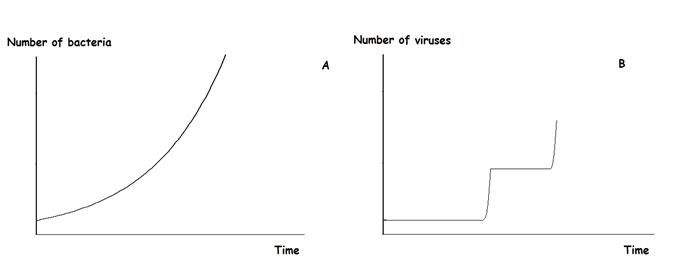H2 Biology Questions
-
Hi, I have some bio questions that I'm not sure how to do. I have attempted the questions and I just need to check if my answers are acceptable. Thanks :)
DNA and GENOMICS
Knowing that the genetic code is almost universal, a scientist uses molecular biological methods to insert the human β-globin gene into bacterial cells, hoping the cells will express it and synthesize functional β-globin protein. Instead, the protein produced is non-functional and is found to contain many fewer amino acids than does the β-globin made by an eukaryotic cell. Explain why.
My answer: Prokaryotes do not have RNA splicing. The introns are transcribed by the bacteria in the mRNA strand. The intron could have a stop codon within it sequences. Thus when translated by the bacteria ribosome it could lead to a non-functional, truncated protein.
VIRUSES
When bacteria infect an animal, the number of bacteria in the body increases in an exponential fashion (graph A). After the infection by a virulent animal virus with a lytic reproductive cycle, there is no evidence of infection for a while. Then, the number of viruses rises suddenly and subsequently increases in a series of step (graph B). Explain the difference in the curves
My answer: Graph A shows an exponential increase in the number of bacteria as time increases while graph B shows a plateau followed by a sudden, sharp increase with time. Graph A increases smoothly, without any plateaus because bacteria multiply by binary fission very quickly (about 20 minutes). However graph B has its shape because it takes time for viruses to infect their host animal cells (accounting for the initial plateau) and time for it to replicate the viral genome and proteins before it lyses the cell, releasing virions outside the cell (accounting for the sharp sudden increase).
The time on the x-axis is ambiguous? If the time on the x-axis is long, then the explanation for the plateau is that it the virus can remain latent? -
Forgot the graph:
